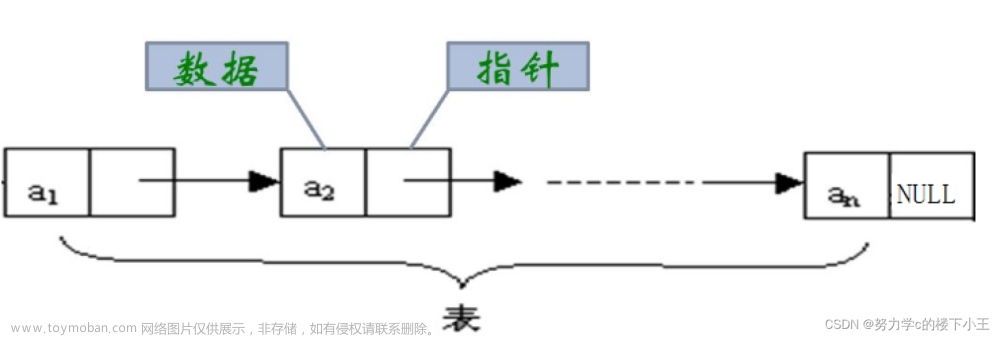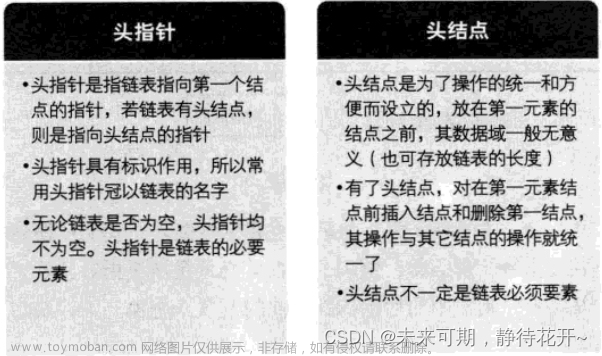目录
1.线性表概念
1.1 什么是顺序列表
1.2 线性表
2.顺序表实现
将有以下功能:
详细过程
顺序表的动态存储
顺序表初始化
尾插
扩容
头插
更改后的尾插
尾删
头删
打印
释放内存
优化顺序表 (任意位置插入删除)
优化后的头插尾插
优化后的头删尾删
查找和删除
进行装饰(菜单)
成品
SeqList.h
SeqList.c
Test.c:
1.线性表概念
1.1 什么是顺序列表
顺序列表(Sequential List)是一种使用连续的内存空间存储元素的线性数据结构。顺序列表中的元素按照其在内存中的物理顺序依次排列,同时通过索引来访问元素。
顺序列表可以使用数组来实现,数组的下标就是元素的索引。由于数组具有随机访问的特性,即可以通过索引直接访问元素,因此顺序列表在查找指定位置的元素时具有较高的效率。
顺序列表的特点包括:
-
连续的内存空间:顺序列表中的元素在内存中是连续存储的,这样可以通过索引进行快速访问,提高了访问效率。
-
固定大小:顺序列表的大小在创建时就确定,一旦分配了固定大小的内存空间,就无法自动扩展或缩小。需要预估元素的个数,以避免空间浪费或溢出。
-
随机访问效率高:由于顺序列表基于数组实现,并支持随机访问,可以在O(1)的时间复杂度内获取指定位置的元素值。
-
插入和删除的效率较低:当需要在顺序列表的中间位置插入或删除元素时,需要移动部分元素,导致时间复杂度为O(n)。因此,在有频繁的插入和删除操作时,顺序列表的效率可能较低。
需要注意的是,顺序列表适用于元素个数固定且随机访问较为频繁的场景。当需要频繁进行插入和删除操作,或者元素个数不确定时,可以考虑其他数据结构,如链表。
1.2 线性表
线性表(linear list)是n个具有相同特性的数据元素的有限序列。 线性表是一种在实际中广泛使
用的数据结构,常见的线性表:顺序表、链表、栈、队列、字符串…
线性表在逻辑上是线性结构,也就说是连续的一条直线。但是在物理结构上并不一定是连续的,
线性表在物理上存储时,通常以数组和链式结构的形式存储。
2.顺序表实现
将有以下功能:
// 顺序表的动态存储
typedef struct SeqList
// 基本增删查改接口
// 顺序表初始化
void SeqListInit(SeqList* psl);
// 顺序表销毁
void SeqListDestory(SeqList* psl);
// 顺序表打印
void SeqListPrint(SeqList* psl);
// 检查空间,如果满了,进行增容
void CheckCapacity(SeqList* psl);
// 顺序表尾插
void SeqListPushBack(SeqList* psl, SLDataType x);
// 顺序表尾删
void SeqListPopBack(SeqList* psl);
// 顺序表头插
void SeqListPushFront(SeqList* psl, SLDataType x);
// 顺序表头删
void SeqListPopFront(SeqList* psl);
// 顺序表查找
int SeqListFind(SeqList* psl, SLDataType x);
// 顺序表在pos位置插入x
void SeqListInsert(SeqList* psl, size_t pos, SLDataType x);
// 顺序表删除pos位置的值
void SeqListErase(SeqList* psl, size_t pos);
详细过程
定义三个文件:
头文件 SeqList.h
函数的实现SeqList.c
代码的测试 Test.c
顺序表的动态存储
//SeLqist.h
#define N 200
typedef int SLDataType;
//静态顺序表 -- N太小,可能不够用 N太大,可能浪费空间
//struct SeqList
//{
// SLDataType a[N];
// int size;
// int capa;
//};
//动态顺序表
typedef struct SeqList
{
SLDataType* a;// 指向数组的指针
int size; // 数据个数
int capacity;// 容量-空间大小
}SL;
顺序表初始化
//SeqList.c
void SLInit(SL* ps)
{
ps->a = NULL;
ps->size =ps->capacity= 0;
}
尾插
void SLPushBack(SL* ps, SLDataType x)
{
//检查容量空间,满了扩容
if (ps->capacity == ps->size)
{
int newCapacity = 0;
if (ps->capacity == 0)
newCapacity = ps->capacity = 4;
else
newCapacity = ps->capacity * 2;
SLDataType* tmp = (SLDataType*)realloc(ps->a, newCapacity * sizeof(SLDataType));
if (tmp == NULL)
{
printf("realloc fail\n");
//exit(-1);
}
ps->a = tmp;
ps->capacity = newCapacity;
}
ps->a[ps->size] = x;
ps->size++;
}
扩容
//动态增容
void SLCheckCapacity(SL* ps)
{
//检查容量空间,满了扩容
if (ps->capacity == ps->size)
{
int newCapacity = 0;
if (ps->capacity == 0)
newCapacity = ps->capacity = 4;
else
newCapacity = ps->capacity * 2;
SLDataType* tmp = (SLDataType*)realloc(ps->a, newCapacity * sizeof(SLDataType));
if (tmp == NULL)
{
printf("realloc fail\n");
//exit(-1);
}
ps->a = tmp;
ps->capacity = newCapacity;
}
}
头插
因为多处要进行数据扩容,故将数据扩容单独用写为一个函数
void SLPushBack(SL* ps, SLDataType x)
{
SLCheckCapacity(ps);
ps->a[ps->size] = x;
ps->size++;
}
更改后的尾插
//尾插
void SLPushBack(SL* ps, SLDataType x)
{
SLCheckCapacity(ps);
ps->a[ps->size] = x;
ps->size++;
}
尾删
void SLPopBack(SL* ps)
{
//尾部要删除的数字无需重新定义数字,意义不大
//只需将 size-- 即可(要防止越界)
assert(ps->size>0);//防止空了还继续删除
ps->size--;
}
头删
//头删
void SLPopFront(SL* ps)
{
assert(ps->size > 0);
int begin = 1;
while (begin<ps->size)
{
ps->a[begin - 1] = ps->a[begin];
++begin;
}
ps->size--;
}
打印
//打印
void SLPrint(SL* ps)
{
assert(ps!=NULL);
for (int i = 0;i < ps->size;i++)
{
printf("%d ", ps->a[i]);
}
printf("\n");
}
释放内存
//释放内存
void SLDestory(SL* ps)
{
assert(ps != NULL);
if (ps->a)
{
free(ps->a);
ps->a = NULL;
ps->capacity = ps->size = 0;
}
}
优化顺序表 (任意位置插入删除)
增加顺序表功能:在中间部分 插入/删除 数字,也可简化头尾插删代的码量
//任意位置插入 (插入数据都要防止越界)
void SLInsert(SL* ps, int pos, SLDataType x)
{
assert(ps);
assert(pos >= 0 && pos < ps->size);
SLCheckCapacity(ps);
int end = ps->size - 1;
while (end>=pos)
{
ps->a[end + 1] = ps->a[end];
--end;
}
ps->a[pos] = x;
ps->size++;
}
//任意位置删除
void SLErase(SL* ps, int pos)
{
assert(pos >= 0 && pos < ps->size);
int begin = pos;
while (begin<ps->size)
{
ps->a[begin] = ps->a[begin + 1];
++begin;
}
ps->size--;
}
既然已经做到在任意位置可以插入代码,则可以对之前写的代码进行简化:
优化后的头插尾插
//尾插
void SLPushBack(SL* ps, SLDataType x)
{
SLInsert(ps, ps->size, x);
}
//头插
void SLPushFront(SL* ps, SLDataType x)
{
SLInsert(ps, 0, x);
}
优化后的头删尾删
//尾删
void SLPopBack(SL* ps)
{
SLErase(ps, ps->size - 1);
}
//头删
void SLPopFront(SL* ps)
{
SLErase(ps, 0);
}
查找和删除
//查找
int SLFind(SL* ps, SLDataType x)
{
for (int i = 0; i <ps->size; i++)
{
if (ps->a[i] == x)
return i;
}
return -1;//没找到
}
//修改
int SLModify(SL* ps, int pos, SLDataType x)
{
assert(ps);
assert(pos >= 0 && pos < ps->size);
ps->a[pos] = x;
}
测试该两项功能test.c:
//
int x = 0;
printf("请输入你要删除的值:>");
scanf("%d", &x);
int pos = SLFind(&sl, x);
if (pos != -1)
{
SLErase(&sl, pos);
}
else
printf("没有找到%d\n",x);
SLPrint(&sl);
//
int y, z;
printf("请输入你要修改的值和修改后的值:>");
scanf("%d %d", &y,&z);
pos = SLFind(&sl, y);
if (pos != -1)
{
SLModify(&sl, pos,z);
}
else
printf("没有找到%d\n", y);
SLPrint(&sl);
//
int f = 0;
printf("请输入你要删除的值,并删除所有与之相同的值:>");
scanf("%d", &f);
pos = SLFind(&sl, f);
while (pos!=-1)
{
SLErase(&sl, pos);
pos = SLFind(&sl, f);
}
进行装饰(菜单)
void menu()
{
printf("*******************************\n");
printf("1.头插 2.尾插 3.查找 \n");
printf("4.删除 5.连续删除 6.修改 \n");
printf("7.打印 8.退出 \n");
printf("*******************************\n");
}
成品
SeqList.h
#pragma once
#include <stdio.h>
#include <assert.h>
#include <stdlib.h>
typedef int SLDataType;
//静态顺序表 -- N太小,可能不够用 N太大,可能浪费空间
//struct SeqList
//{
// SLDataType a[N];
// int size;
// int capa;
//};
//动态顺序表
typedef struct SeqList
{
SLDataType* a;// 指向数组的指针
int size; // 数据个数
int capacity;// 容量-空间大小
}SL;
//初始化
void SLInit(SL* ps);
//头插
void SLPushFront(SL* ps, SLDataType x);
//头删
void SLPopFront(SL* ps);
//尾插
void SLPushBack(SL* ps, SLDataType x);
//尾删
void SLPopBack(SL* ps);
//任意位置插入
void SLInsert(SL* ps,int pos, SLDataType x);
//任意位置删除
void SLErase(SL* ps, int pos);
//打印
void SLPrint(SL* ps);
//动态增容
void SLCheckCapacity(SL* ps);
//释放内存
void SLDestory(SL* ps);
//查找
int SLFind(SL* ps, SLDataType x);
//修改
void SLModify(SL* ps, int pos, SLDataType x);
SeqList.c
#include "SeqList.h"
void SLInit(SL* ps)
{
ps->a = NULL;
ps->size = ps->capacity = 0;
}
//打印
void SLPrint(SL* ps)
{
assert(ps!=NULL);
for (int i = 0;i < ps->size;i++)
{
printf("%d ", ps->a[i]);
}
printf("\n");
}
//动态增容
void SLCheckCapacity(SL* ps)
{
assert(ps != NULL);
//检查容量空间,满了扩容
if (ps->capacity == ps->size)
{
int newCapacity = 0;
if (ps->capacity == 0)
newCapacity = ps->capacity = 4;
else
newCapacity = ps->capacity * 2;
SLDataType* tmp = (SLDataType*)realloc(ps->a, newCapacity * sizeof(SLDataType));
if (tmp == NULL)
{
printf("realloc fail\n");
//exit(-1);
}
ps->a = tmp;
ps->capacity = newCapacity;
}
}
//任意位置插入 (插入数据都要防止越界)
void SLInsert(SL* ps, int pos, SLDataType x)
{
assert(ps);
assert(pos >= 0 && pos <= ps->size);
SLCheckCapacity(ps);
//挪动数据
int end = ps->size - 1;
while (end>=pos)
{
ps->a[end + 1] = ps->a[end];
--end;
}
ps->a[pos] = x;
ps->size++;
}
//任意位置删除
void SLErase(SL* ps, int pos)
{
assert(pos >= 0 && pos < ps->size);
int begin = pos;
while (begin<ps->size)
{
ps->a[begin] = ps->a[begin + 1];
++begin;
}
ps->size--;
}
//尾插
void SLPushBack(SL* ps, SLDataType x)
{
SLInsert(ps, ps->size, x);
}
//头插
void SLPushFront(SL* ps, SLDataType x)
{
SLInsert(ps, 0, x);
}
//尾删
void SLPopBack(SL* ps)
{
SLErase(ps, ps->size - 1);
}
//头删
void SLPopFront(SL* ps)
{
SLErase(ps, 0);
}
//查找
int SLFind(SL* ps, SLDataType x)
{
for (int i = 0; i <ps->size; i++)
{
if (ps->a[i] == x)
return i;
}
return -1;//没找到
}
//修改
void SLModify(SL* ps, int pos, SLDataType x)
{
assert(ps);
assert(pos >= 0 && pos < ps->size);
ps->a[pos] = x;
}
//释放内存
void SLDestory(SL* ps)
{
assert(ps != NULL);
if (ps->a)
{
free(ps->a);
ps->a = NULL;
ps->capacity = ps->size = 0;
}
}
Test.c:
#include "SeqList.h"
void menu()
{
printf("*******************************\n");
printf("1.头插 2.尾插 3.查找 \n");
printf("4.删除 5.连续删除 6.修改 \n");
printf("7.打印 8.退出 \n");
printf("*******************************\n");
}
int main()
{
//初始化
SL sl;
SLInit(&sl);
int option = -1;
int x,y,z,f;
do
{
menu();
scanf("%d", &option);
int val, pos;
switch (option)
{
case 1:
printf("请输入要头插的数据,以0结束:>");
scanf("%d", &val);
while (val!=0)
{
SLPushFront(&sl, val);
scanf("%d",&val);
}
break;
case 2:
printf("请输入要尾插的数据,以0结束:>");
scanf("%d", &val);
while (val != 0)
{
SLPushBack(&sl, val);
scanf("%d", &val);
}
break;
case 3:
printf("请输入要查找的数字:>");
scanf("%d", &y);
pos = SLFind(&sl, y);
if (pos != -1)
{
printf("找到了%d\n", y);
}
else
printf("没有找到%d\n", y);
SLPrint(&sl);
break;
case 4:
printf("请输入你要删除的值:>");
scanf("%d", &x);
int pos = SLFind(&sl, x);
if (pos != -1)
{
SLErase(&sl, pos);
}
else
printf("没有找到%d\n", x);
SLPrint(&sl);
break;
case 5:
printf("请输入你要删除的值,并删除所有与之相同的值:>");
scanf("%d", &f);
pos = SLFind(&sl, f);
if (pos != -1)
{
while (pos != -1)
{
SLErase(&sl, pos);
pos = SLFind(&sl, f);
}
}
else
printf("没有找到要删除的值%d\n", f);
break;
case 6:
printf("请输入你要修改的值和修改后的值:>");
scanf("%d %d", &y, &z);
pos = SLFind(&sl, y);
if (pos != -1)
{
SLModify(&sl, pos, z);
}
else
printf("没有找到%d\n", y);
SLPrint(&sl);
break;
case 7:
SLPrint(&sl);
break;
case 8:
break;
default:
printf("输入错误,请重新输入\n");
break;
}
} while (option!=8);
printf("退出成功\n");
//释放内存
SLDestory(&sl);
return 0;
}
到这里就结束啦,创作不易,求求点个赞啦╰(°▽°)╯文章来源:https://www.toymoban.com/news/detail-684876.html
 文章来源地址https://www.toymoban.com/news/detail-684876.html
文章来源地址https://www.toymoban.com/news/detail-684876.html
到了这里,关于数据结构:线性表之-顺序表的文章就介绍完了。如果您还想了解更多内容,请在右上角搜索TOY模板网以前的文章或继续浏览下面的相关文章,希望大家以后多多支持TOY模板网!













